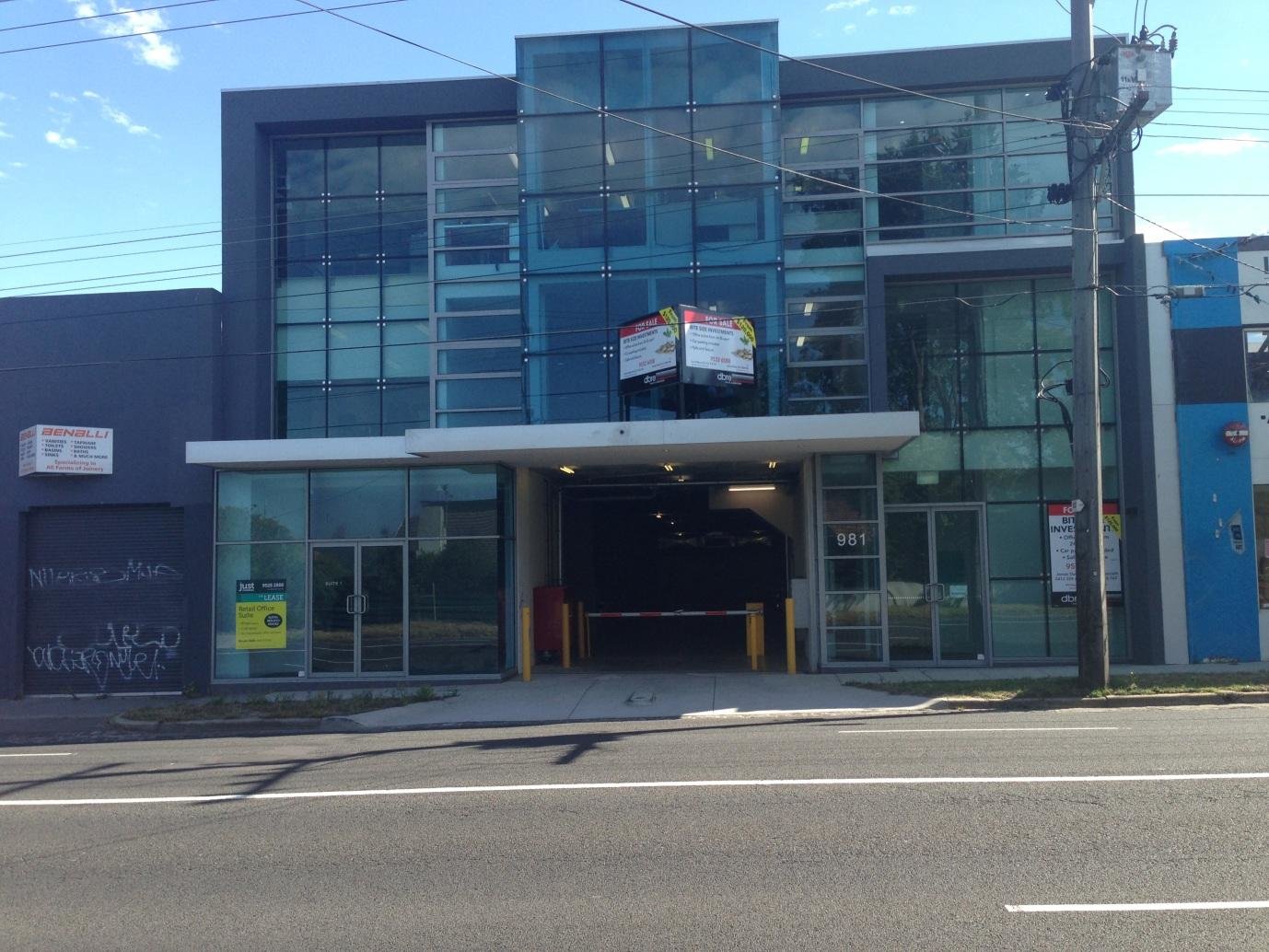
Site Description
Architecture firm Archivision has occupied a small office building, strategically located on a main road that builds up traffic even during office hours. Being on a strategic position in an industrial area makes the building attractive to other office occupants, but the building management, along with its poor waste management, has made occupying less attractive because of this temporary environmental problem facing them.
Garbage collection is inappropriate while the firm produces a great amount of paper and ink wastes, not to mention the food waste and from other activities in the kitchen and in the suites. Archivision occupies 18 out of 24 suites, which use computer printouts for their work.
The building’s two-level structure exacerbates the situation because it has only one rest room and a kitchen facility for all occupants of the building. The building owner, the Body Corporation, has no concern for waste management partly due to lack of funds to cope with the increasing waste, or they have left it to the occupants to settle the matter.
There is a little bit of conscience however, because the owner assigned a janitorial service company to clean the kitchen, restrooms and hallways, so-called communal areas, only once a week. The suites are under the occupants’ responsibilities, where they have to clean and gather their trash and collect them for a common waste bin, situated down the car park.
The contracted company collects the garbage once a week. One thing worse is that there is no recycling process, and the garbage collector disposes of all the trash in the same manner. The occupants have so much of paper trash, stationery, ink, other solid waste and lunch waste, which should have a segregation and recycling process, but are just left there and mixed in a common garbage container.
The usual process of disposing of wastes includes collecting the trash from the common waste bin, collected every Friday, and there is no other means of recycling or reusing the materials from the suites. These materials are potential 3R materials (recycle-reduce-reuse) since paper and ink can be recycled and used for other purposes.
The Body Corporation worries much for other matters and sees things not the occupants’ ways, who want to settle the issue of waste management so that they can proceed with other business activities without the thought of environmental problems they may have caused.
Rationale for waste assessment
The occupants want to settle this issue of waste management even if it may cost them a bit. The issue is of paramount importance. They want to help create a clean environment and minimise spending on stationery and office supplies. They have to do something and institute new waste management measures.
Archivision produces paper and ink wastes, which can be solved with simple waste management techniques, or recycle-reuse processes. Even simple paper reuse can help reduce the increasing paper trash piling up under their tables and in their small bins.
The firm’s clients exacerbate the situation by carelessly throwing their garbage underneath the tables. Their suites are not presentable offices; rather they present a dirty picture for their firm. The solution requires a plan and a process, taking into account the situation and the few stakeholders affected by this simple environmental problem.
This process should not give much cost and concern for the occupants, but must be a systematic process that will require little effort and should not affect their usual office processes. In fact, it should help them, in a way.
Methodology
The company Archivision assigned a team to conduct a simple office inquiry and provide a reasonable waste management plan. The communal waste bin gave idea of the amount of solid waste collected everyday and every Friday.
The employees provided data of their specific wastes produced, to include the printout and the ink wastes, the water plastic bottles, and the lunch wastes. Interviews led to some information, supplies were calculated, and proposed savings from the recycling plans came up. Invoices traced the average figures for monthly supplies for paper, ink, and water bottles.
The team has to answer the following questions:
- Do employees use supplies properly?
- How much of the resources go to waste?
- Are there ways to save and add to company savings?
- How much can be spent and what is to be saved?
The team produced approximates, and reduced the specific and accurate amounts on tables to present a right management plan for the 18 suites, i.e. for the average week and the maximum-production week (weeks where they have the most number of clients). Upon analysing these figures, their motivation soared.
They can now produce a comprehensive management plan that provides less cost and even add more money to their savings. The employees can even add these amounts to their allowances.
The waste-management team presented these monthly supply figures.
*Quantities are based on average monthly figures
Waste generation rates
Waste generation refers to the amount of waste produced by the suites and the approximate equivalent in dollars. The staff calculated the cost of the paper, bottled water and ink used in an average month and the month with the most business activities.
Through discussions, the staff produced the reasonable price equivalent. Shown in the table below are the rates of the generated wastes, from which source and the quantity, and the cost in dollars.
Average Wastage
*Quantities are based on waste for an average month
Maximum Wastage
*Quantities are based on waste for a maximum usage month
The figures are approximate calculations, which can vary from time to time, depending on the amount of wastes generated from the suites. Based on these figures, the staff formed their simple Waste Management Plan.
Presently, there is one waste bin at the parking area and a contracted company disposes of the contents of this bin. The garbage fee of $500 is fixed and added into the suite fees, which is divided by 24 (for the number of suites). Since only 18 rooms are occupied, the six rooms charge has to be deducted.
The owner is continuously under complaint from occupants and from concerned environmental groups from its indifference to environmental problems plaguing the area. The building lacks adequate waste management and the owner would not give out a few dollars from their pocket to provide a little solution to the growing environmental problem.
Results (pictorials and interviews) from Waste Management Analysis
Suite 20 – Archivision, the occupant
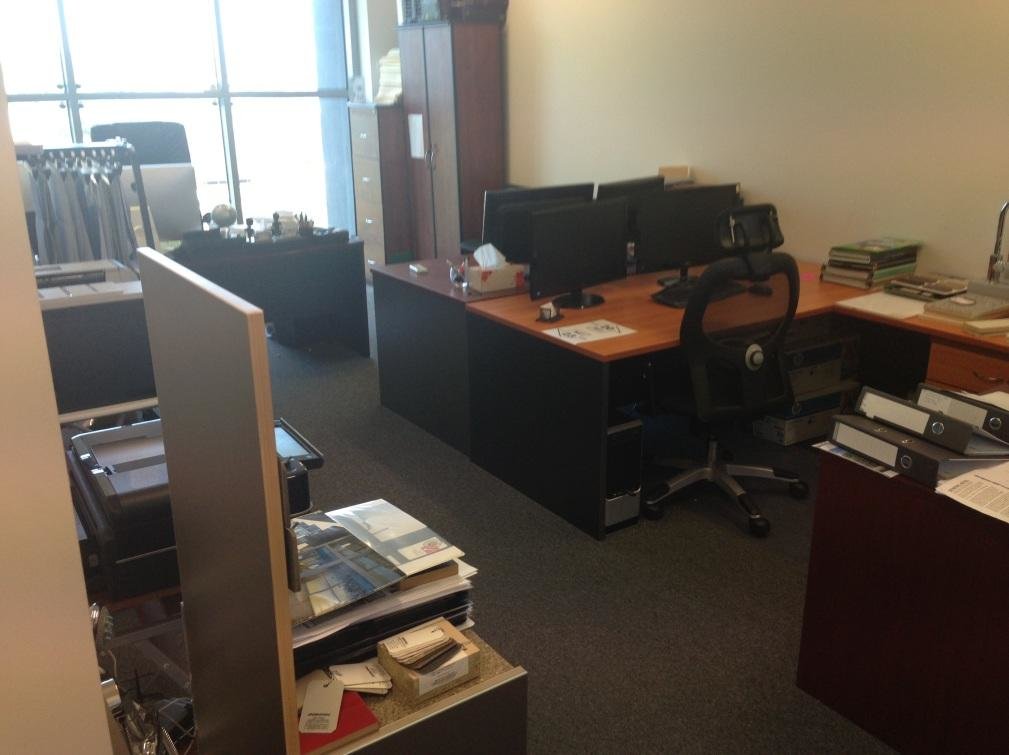
Suite 20 – Archivision

Wasted printer paper stacked below printer

Used ink cartridges
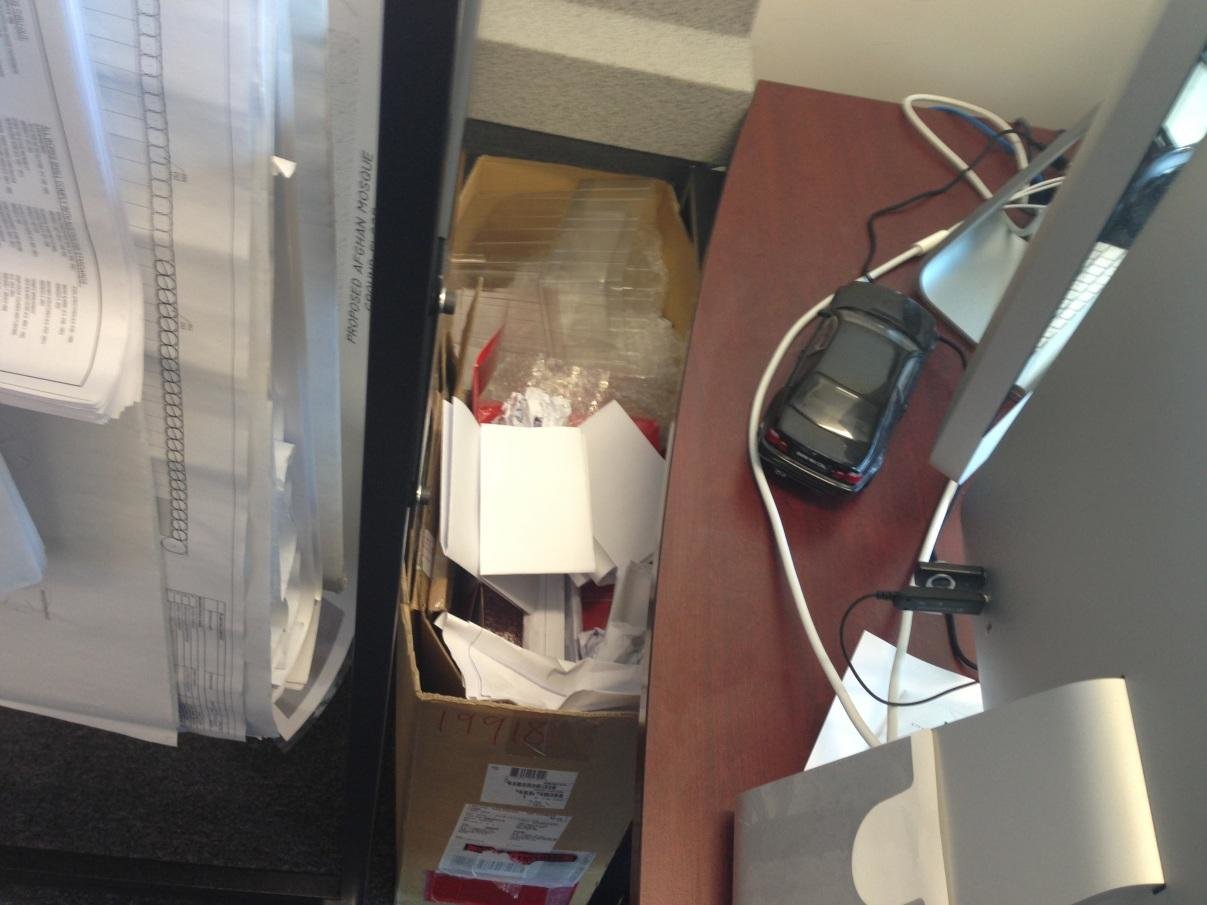
General waste collection bin
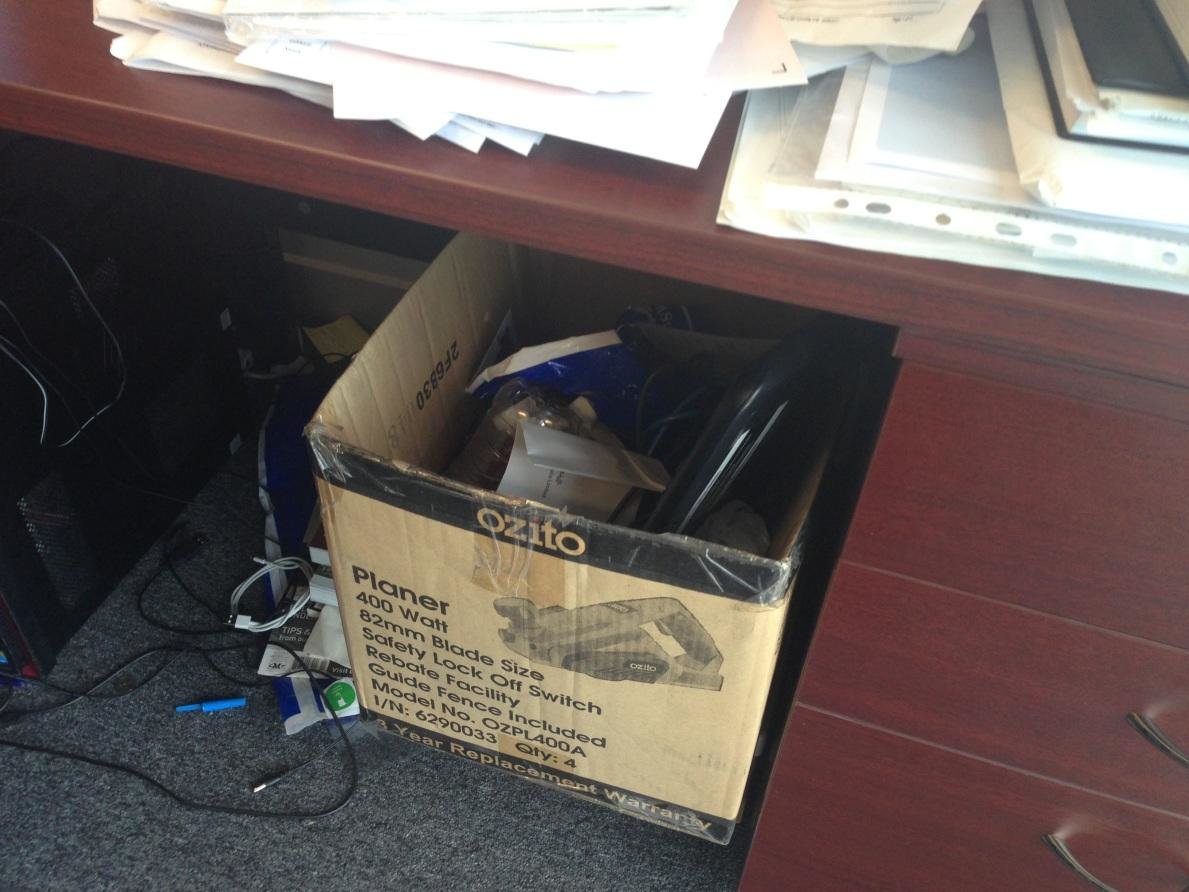
General waste collection bin
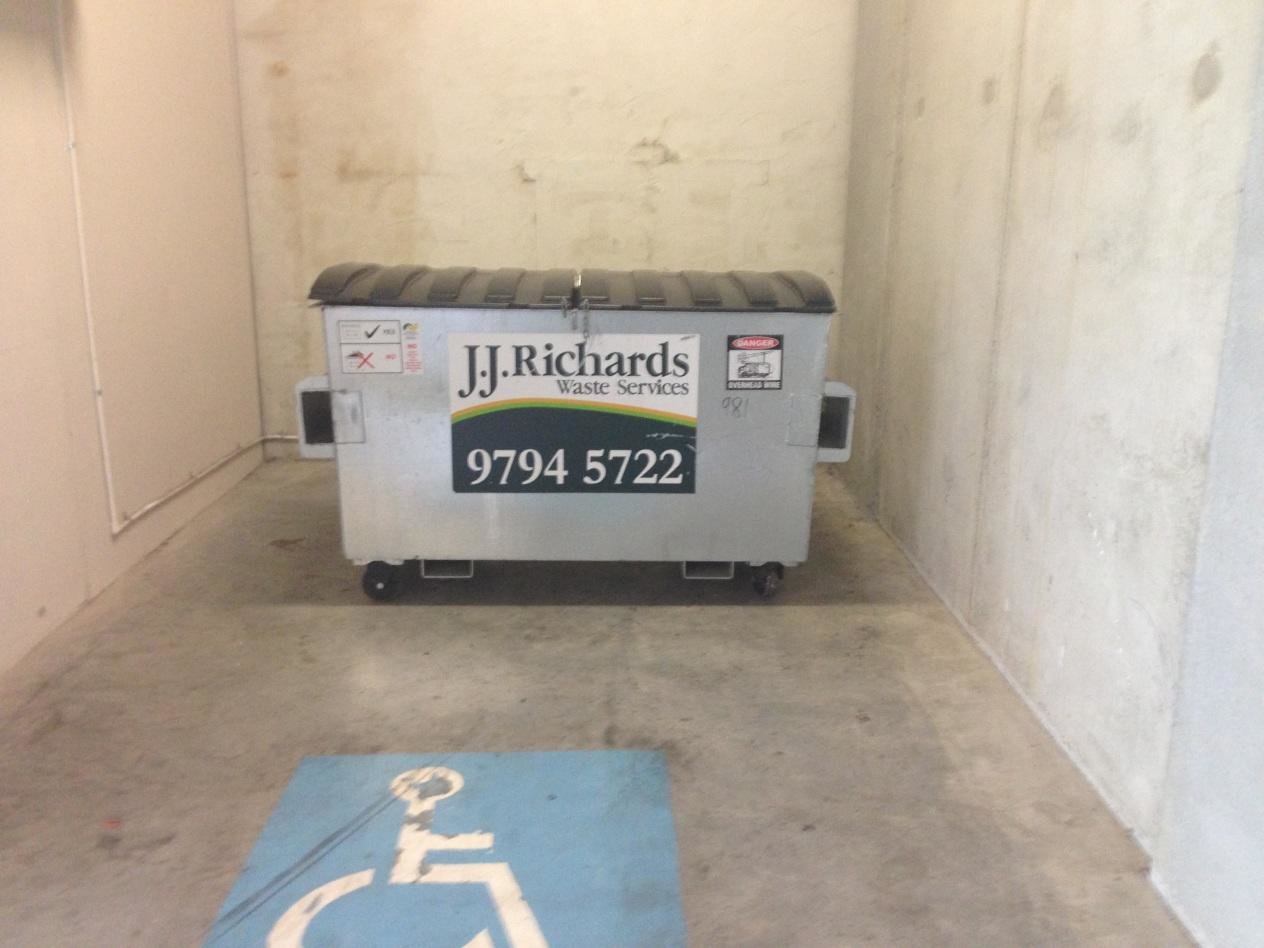
Communal dump bin for the entire building
The images and description give us a brief background of the environmental problem facing the building and the occupants. The inappropriate garbage collection has limited the spaces in the offices, or given little room for the employees to do their job, and the offices have become dumping bins by themselves. The communal bin cannot accommodate the mounting garbage produced from the suites.
Analysis of Results
Waste from the 18 suites of Archivision is growing. The amount of waste is significant and has to be dealt with immediately and appropriately. Waste comes from computer print outs, plastic bottles, and food. Minor changes do not require a great deal of effort, but simple solutions can involve the employees and the Body Corporation.
First, we have to focus on the paper printouts, the cartridges, and the water bottles. We can minimise print outs by reducing errors in clerical work. Some employees carelessly print their work without exerting much effort in correcting their work; or they correct their work after they have printed them, which is a waste of material and electricity.
Reviewing and correcting before printing can reduce paper print outs and ink cartridges. The used paper can also be recycled or reused, rather than immediately throwing it to the trash bin. We can use in taking notes or for other simple purposes before they can be thrown out. Paper recycling-reuse is one of the simplest ways of reducing extraction of raw materials from our environment.
We can also give the waste paper to recycling companies for appropriate disposal. Recycling waste paper is an honourable goal since we will have the chance of helping minimise cutting of trees that we use in paper manufacture.
On the other hand, we have information that the printer cartridges can also be recycled, but they have to be returned to the manufacturer for proper disposal. It is better to collect the cartridges rather than throw them. The question of water bottles came up.
The simple solution of reusing the water bottles, in a clean and proper way, will give the company some savings. The suite occupants throw some 50 bottles a week, and this increases when they receive more clients, or when business activities at Archivision are at its peak.
If we can clean and reuse the bottles, we will solve the bottle disposal problem and earn more savings. We can recycle the bottles in a common area in the kitchen, and assign employees on an alternate basis to do the job by emptying, cleaning and reusing the bottles.
These are few and simple steps that can help solve the simple environmental problem that the company and the building have created. The team’s plans will reduce waste, add a little savings for the company, and we can go on with our normal lives once again. We have done something for the environment and for the owner of the building.
Generated waste
Having done the initial steps, the team summarised the figures of the generated waste for an average week.
- 50 – 100 litres of general waste
Through the principle of recycle-reuse, the team reduced the quantity of general waste by reusing the bottles. This is a simple solution and a step recommended by retail companies and environmental groups in reducing waste materials. The rest of the waste will still be disposed of as it is currently being practiced through the communal waste bin.
- 1/2 heavy duty black and white printer cartridge
Minimising printing can reduce the use of print cartridges. Employees should also take efforts in improving their work habits. The team recommends that employees should take the effort of correcting and proofreading their work before printing them in order to minimise print outs and reduce paper waste.
The ink manufacturer can help by collecting and recycling their ink cartridges once a month. This step will only alter the usual ways of printing, but new technology applications (video presentation, power point presentation, etc.) can reduce paper printing. This may not be applicable at all times in architecture, which requires blue prints, but current technology innovations have various alternatives that reduce printing.
- 200 – 300 pages of wasted printer paper
This estimate can vary depending on the frequency of printing, but the staff reports that it can be even more. One of the best methods of controlling waste is to reduce waste. Reducing wasted paper can add up to our savings.
An organisation like Archivision occupying a small building can help in solving simple environmental problems by simply disposing of their trash. In the concept of waste management, paper and ink are simply recyclable materials.
Estimated Wastage Through Changes Implemented
*Quantities are based on waste for an average month
Savings Accumulated
*Quantities are based on waste for an average month
The following is a summary of expenses we will incur in the new disposal method, which will include collecting and recycling of paper and ink cartridges.
- Cost of pickup of recycled paper – $12 per month
- Cost of pickup of ink cartridges – $18.50 per month
- Total cost of new disposal methods – $30.50 per month
Total Estimated Savings
*Quantities are based on waste for an average month
The estimates and the calculations were drawn from reasonable investigation and accurate calculations provided by the employees. Through recycling-reuse, the waste management plan can provide savings, and we can easily control the flow of waste.
Recommendations for waste management
The ultimate goal is to reduce the waste and recycle the recyclable ones. Paper waste, ink cartridges, and a limited amount of solid and food waste are easy to control. When team accomplishes this, the communal waste bin in the car park can accommodate the amount of waste from the different suites.
The suite occupants have the honest and humanitarian goal of helping solve simple environmental problems, such as what happened in this small building, and it is not their attention to make matters worse. The team assigned to formulate this environmental plan discovered that they have not only solved an environmental problem, they also acquired some savings.
They focused on the generated waste, provided a simple solution and a plan, and motivated their fellow employees into collaborating for the implementation of this plan. The costs of disposing the waste are now part of the company savings, which the employees can spend for some other humanitarian or environmental activities.
There are other simple steps, which can help alleviate the environmental problem in this area. Adding another communal waste bin in the parking area will not cost much for the Body Corporation, the owner of the building. Perhaps, a simple request will motivate the owner to give more for the sake of the environment.
With two communal waste bins, which we can strategically locate on both ends in the car park of the building, we can provide a lasting solution to the waste problem. The collection of garbage must also be on a regular basis, two times a week. The generated waste will have a minimal impact and those responsible for its disposal can easily control the flow of paper waste and other solid wastes coming from the different suites in the building.
The team and the building occupants have made their recommendations and are now into the process of formulating a comprehensive plan for an effective waste management system. Waste management plans are not only applicable for large organisations but also for small businesses, because this is where waste management is mostly neglected.